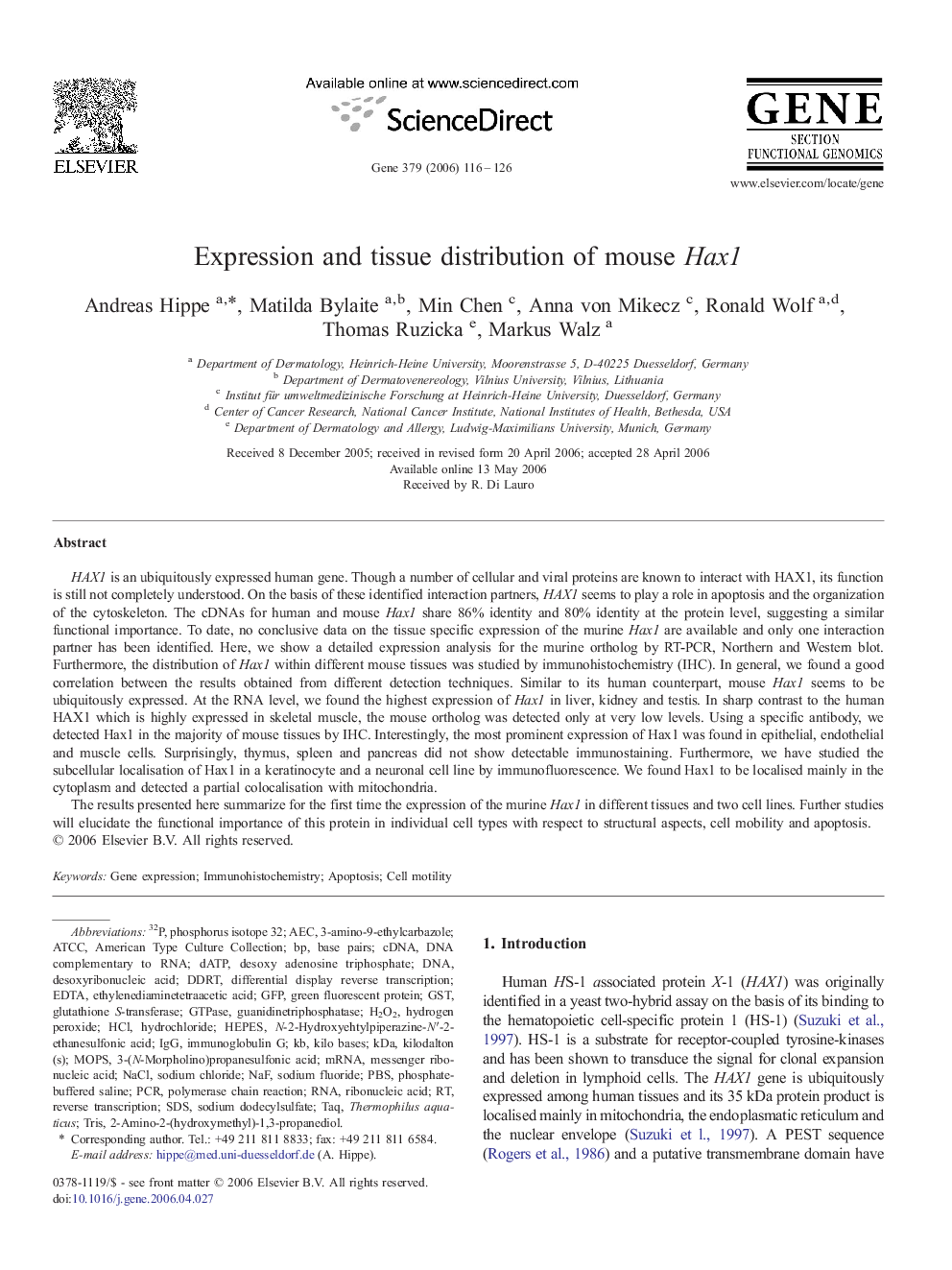| Article ID | Journal | Published Year | Pages | File Type |
|---|---|---|---|---|
| 2820155 | Gene | 2006 | 11 Pages |
HAX1 is an ubiquitously expressed human gene. Though a number of cellular and viral proteins are known to interact with HAX1, its function is still not completely understood. On the basis of these identified interaction partners, HAX1 seems to play a role in apoptosis and the organization of the cytoskeleton. The cDNAs for human and mouse Hax1 share 86% identity and 80% identity at the protein level, suggesting a similar functional importance. To date, no conclusive data on the tissue specific expression of the murine Hax1 are available and only one interaction partner has been identified. Here, we show a detailed expression analysis for the murine ortholog by RT-PCR, Northern and Western blot. Furthermore, the distribution of Hax1 within different mouse tissues was studied by immunohistochemistry (IHC). In general, we found a good correlation between the results obtained from different detection techniques. Similar to its human counterpart, mouse Hax1 seems to be ubiquitously expressed. At the RNA level, we found the highest expression of Hax1 in liver, kidney and testis. In sharp contrast to the human HAX1 which is highly expressed in skeletal muscle, the mouse ortholog was detected only at very low levels. Using a specific antibody, we detected Hax1 in the majority of mouse tissues by IHC. Interestingly, the most prominent expression of Hax1 was found in epithelial, endothelial and muscle cells. Surprisingly, thymus, spleen and pancreas did not show detectable immunostaining. Furthermore, we have studied the subcellular localisation of Hax1 in a keratinocyte and a neuronal cell line by immunofluorescence. We found Hax1 to be localised mainly in the cytoplasm and detected a partial colocalisation with mitochondria.The results presented here summarize for the first time the expression of the murine Hax1 in different tissues and two cell lines. Further studies will elucidate the functional importance of this protein in individual cell types with respect to structural aspects, cell mobility and apoptosis.
